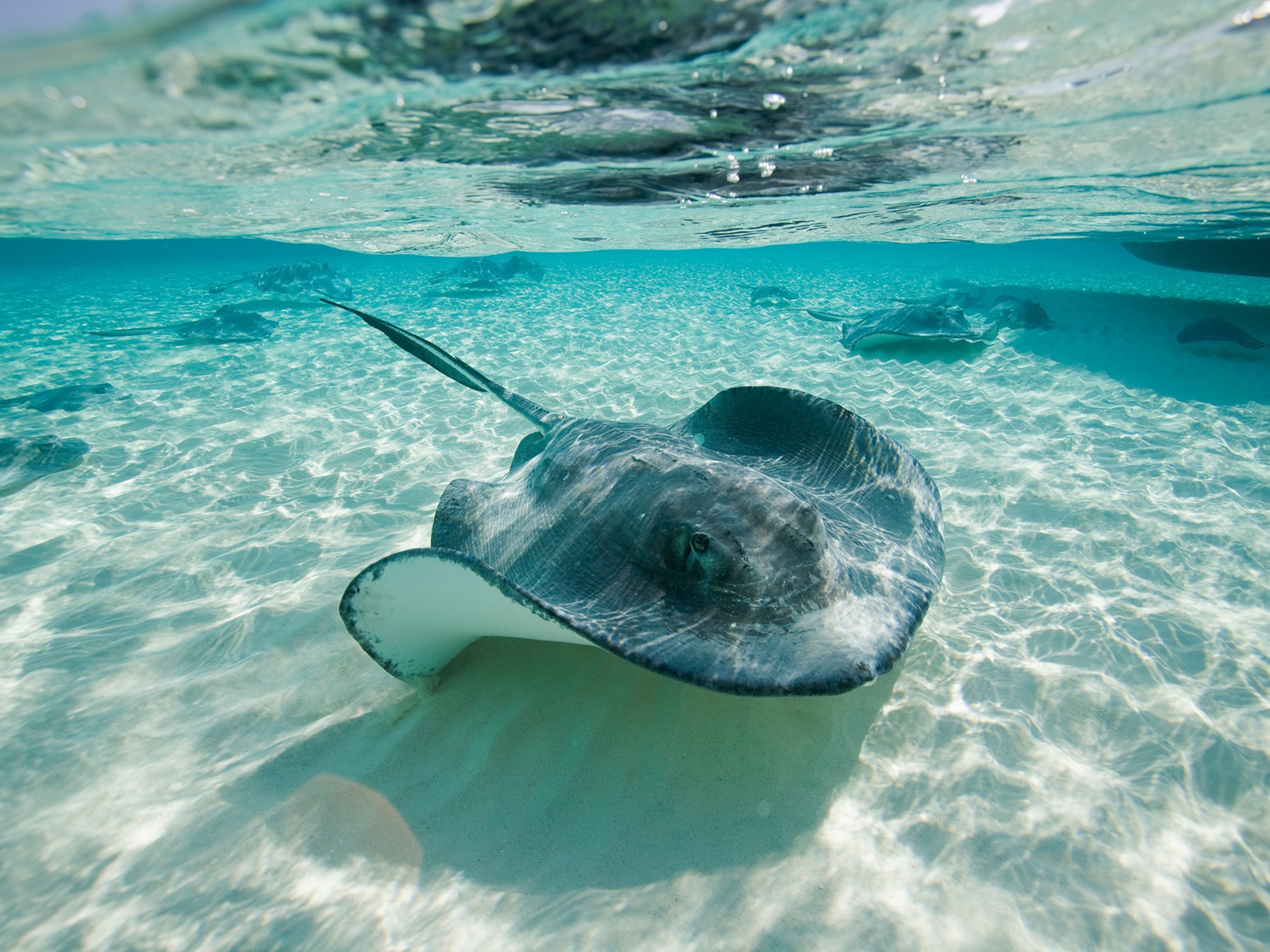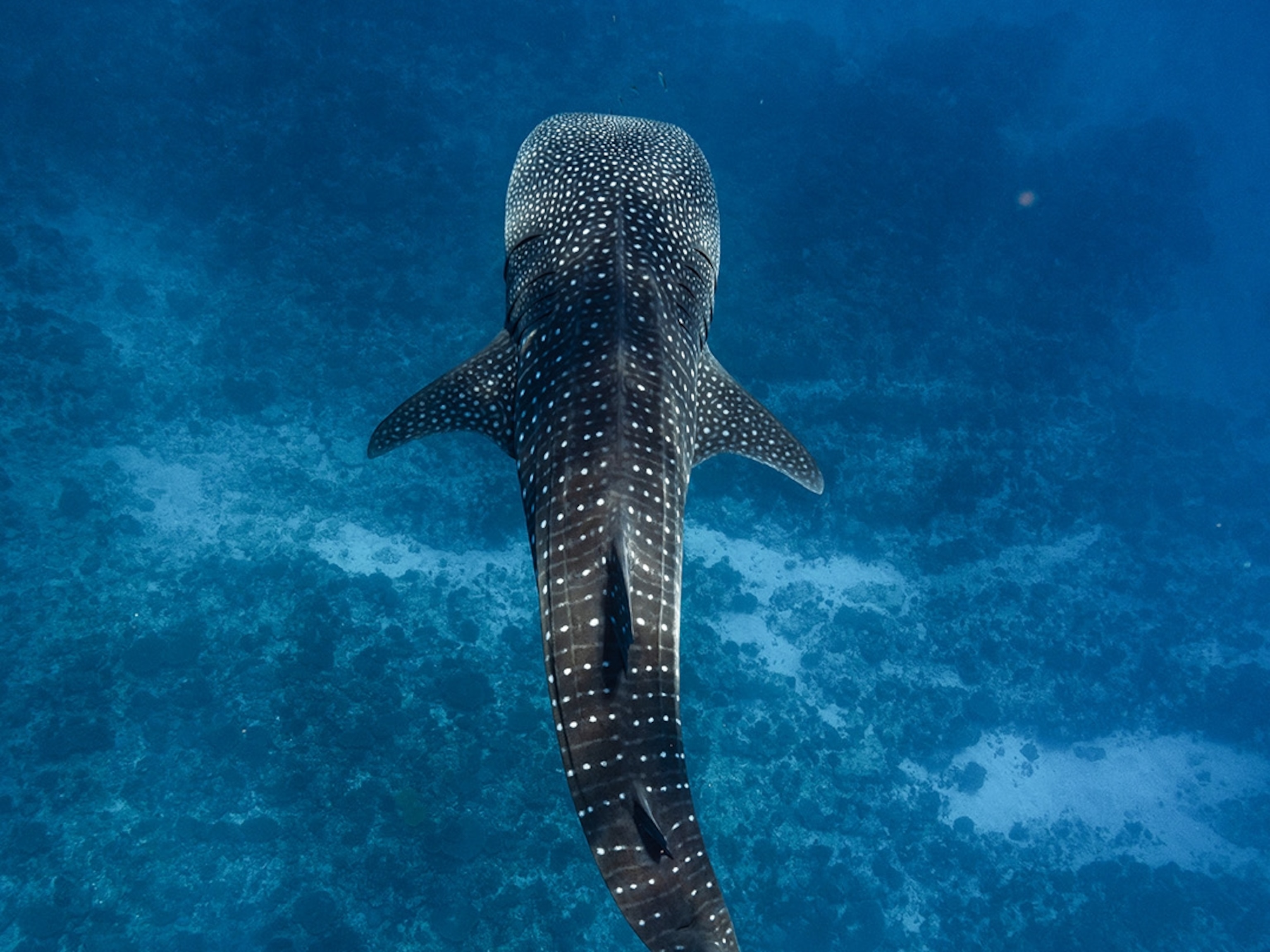
Beyond the Car-Size Stingray: Five Cool Facts About Rays and Skates
Some stingrays are electric, while others have see-through noses and concrete-like teeth.
Earlier this month, scientists in Thailand's Mae Klong River reeled in a massive stingray—possibly the world's largest freshwater fish—as well as a whole lot of reader curiosity.
Paritosh K. wrote in with a question about the photo of researchers hoisting the 7.9-foot-wide (2.4-meter) animal: "Why isn't the guy holding the stingray's tail getting stung?"
He also wondered whether this giant freshwater stingray is venomous, and if its spines grow with age.
Why isn't the guy holding the stingray's tail getting stung?Paritosk K., Reader
So, for Weird Animal Question of the Week, we dove in to learn more about the ancient, arresting, and dizzyingly diverse group of fish called rays and skates.
First off, the recently caught giant freshwater stingray, a species called Himantura polylepis or H. chaophraya, belongs to the Dasyatidae family, which is known for its venomous spines. The number of spines varies by species, but stingrays in this family typically have one, and it grows along with the fish.
What's more, the spine is located toward the base of the tail, not the tip.
"You will notice [the man in the photo] is handling the tail right next to the spine," Misty Paig-Tran, a marine biologist at California State University, Fullerton, says via email. Though his hand is obscured in the image, "he is actually putting pressure near the base of the spine so that [the tail] cannot become erect and sting anyone.
"Clearly he has done this before."
But even pros can make mistakes. Paig-Tran has been stung by a stingray, and calls it "the worst pain I had ever experienced—and that holds up to this day."
Steamrolled Shark
Rays, and their smaller egg-laying relatives, skates, are part of a group called elasmobranchs, fish that have skeletons of cartilage rather than bone and five or more gill slits on the side of their heads.
They're closely related to another group within the elasmobranchs: sharks.
"Imagine a shark body. Then imagine a steamroller going over the top of it. That's how you make a ray," quipped George Burgess, an ichthyologist at the Florida Museum of Natural History, in Gainesville. (See National Geographic's shark pictures.)
Imagine a shark body. Then imagine a steamroller going over the top of it. That's how you make a ray.George Burgess, Ichthyologist, Florida Museum of Natural History
For instance, if you flattened out a shark—and no one recommends doing this—the shark's pectoral, or side, fins would become the wings of the ray.
Sawfish That Saws Fish
Of the 500 known species of rays and skates, the ones both Paig-Tran and Burgess noted as the most unique are the sawfish.
There are five species of sawfish—all with a trademark saw for a nose, and all listed as endangered or critically endangered by the International Union for Conservation of Nature.
It looks like the only fish made by Black and Decker. A sawfish's long snout is studded with what are called rostral teeth, which aren't actually teeth but a modification of the type of scales common to sharks and rays.

The saws are put to good use as weapons and to find—and fillet—other fish.
"They swing their heads back and forth and knock fishes silly, maybe impaling a few on the way as well," Burgess says. (Related: "Sawfish Snout Has Sixth Sense—Splits Prey in Half.")
Shocking Behavior
If you find saws to be a bit old-fashioned, how about rays that tase?
There are 69 species of electric rays, which are able to produce external electric shocks to ward off predators and stun prey via a specialized organ.
"Electric rays actually can be lethal to humans," Paig-Tran says.
If stunned by an electric ray, divers can become unconscious and drown.
An Array of Rays
Rays come in all sorts of spiffy looks. There's the sixgill stingray, unusual for its long pointy snout, Paig-Tran says, and Burgess is partial to the see-through schnoz of the clearnose skate.
The teeth of the cownose ray (scroll down) "look like the concrete or marble pieces put together [to] form a sidewalk," says Burgess. These tough-looking teeth help rays crush crustaceans, a favorite food.
In her research, National Geographic explorer Andrea Marshall has found that manta rays have patterns on their undersides that are unique to that individual. (Watch Andrea Marshall, "Queen of the Manta Rays," talk about her research).
How about that to bring a ray of sunshine to your day?
Got a question about the weird and wild animal world? Tweet me or leave me a note or photo in the comments below. You can also follow me on Facebook.





